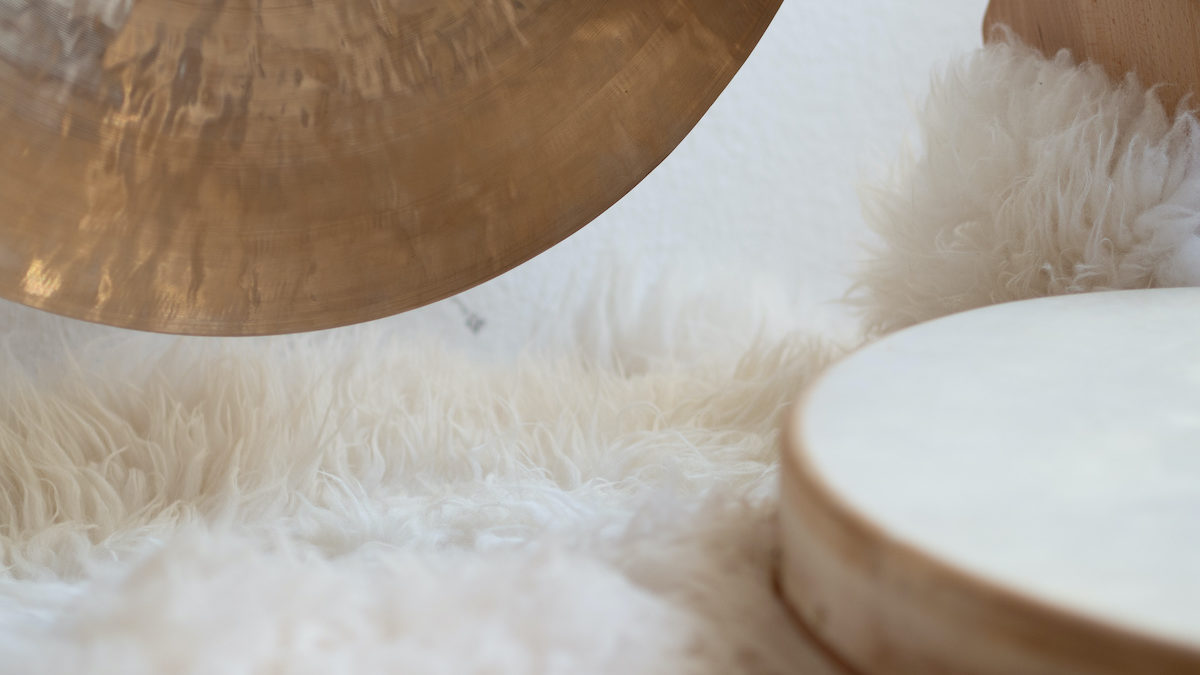How Sound Bathing Became the Wellness Trend That Stuck Around

The health and wellbeing scene is constantly being inundated with new trends, and most will enjoy just five minutes of fame; from the highly criticised teatoxes through to that weird activated charcoal hype that gave us the fear every time we went for a number two. But some trends stick around. Sound bathing is one such trend and despite it making waves on the wellness train back in 2018, it’s come back around.
If the pandemic itself wasn’t anxiety-inducing enough, post-pandemic, with the return of office culture and social calendars, our jam-packed lives have returned. So, it makes sense that anything that could help to bring about a sense of calm sees a rise in popularity.
Never heard of sound bathing? Well, rather than being just sound in a bubble bath as the name might suggest, sound bathing is a series of treatments that include sound therapy or sound healing, explains Farzana Ali, a sound bathing practitioner and founder of The Sound Therapist.
‘Though no water is involved, it’s called a sound bath because the sound is said to ‘wash’ over you,” says Ali. “Both sound therapy and sound healing use sound, vibration and frequencies to induce a more restful state in your brain and body.”
Attending a sound bathing session — which is typically around 45 to 50 minutes long — isn’t just about sitting in a room listening to a recording of whale music though.
Instead, attendees lie on yoga mats or cushions, while the ‘healer’ creates the sounds and vibrations using instruments such as cymbals, crystal bowls and gongs. In fact, a gong bath is a sound bathing session that uses solely gongs, but that’s for another day.
The benefits they can have on the body are pretty amazing. But first, let’s have a quick look at how sound bathing came to be.
Sound Bathing: A Quick History
Sound therapy isn’t as new as we think, as it supposedly goes all the way back to ancient Greek times when flutes were used to “heal” patients and “aid in digestion, treat mental disturbance, and induce sleep”. Australian Aboriginals also used didgeridoos to help heal, whilst Chinese traditions have used chanting as a means of sound healing.
More recently, research has been done into sound and the potential healing benefits it may have. Sir Peter Guy Manners was a British osteopath who spent much of his life researching how sound affects the body and was vocal about the potential certain sound frequencies could have in helping cells to regenerate and return to health.

So, Why Try Sound Bathing?
If you think about it, sound always plays a huge role in dictating our mood. When we go for a workout, upbeat music can energise us, while listening to the sound of the ocean when we’re catching rays on a beach can often cause us to drift off. So, it makes sense that sound bathing would have some sort of impact on our body.
Ali explains that it lowers your heart rate and breath rate and also lowers blood pressure, “so you feel calmer, less stressed out and less anxious”.
“It encourages deep relaxation, can improve sleep, relax muscles and improve your overall sense of wellbeing.”
There have even been studies to back up these benefits. A 2016 study found feelings of anxiety, tension and low moods were actually reduced after a sound bath session. The people involved in the study also felt less pain after a sound bath.
A sound bath can be so relaxing, that sound bathers might actually find their body temperature drops slightly, hence why sessions will often include blankets and rugs.

Of course, it’s not always as easy as we think to lie still and focus on one thing, what with the distractions of technology, and the fact we’re often trying to do a million things at once.
But, during a sound bath session, your aim is to focus on the sounds, your breathing and simply, just being in the moment. It’s an ideal way to switch off. After all, what are you really missing when you don’t check Instagram for 45 minutes?
Why Has It Become Such A Thing?
First, is increased visibility. ‘The number of celebrity fans this type of meditation has, continues to grow – from Madonna to Kim Kardashian. Just this year alone we’ve seen them share that they have attended sound baths or seen pictures of them playing crystal singing bowls,’ says Ali.
Plus, the accessibility around sound bathing has also helped. ‘Various lockdowns over these past 20 months or so, saw a lot more people, myself included, offer sound sessions online that we didn’t do before. Also, pretty much anyone can enjoy and benefit from a sound bath. You just have to lie down and listen and your practitioner does all the hard work for you.’
And, not forgetting the fact that stress is the health epidemic of the 21st century, as classed by the World Health Organisation. A leading cause behind several illnesses, battling stress is something we can all get behind.


















